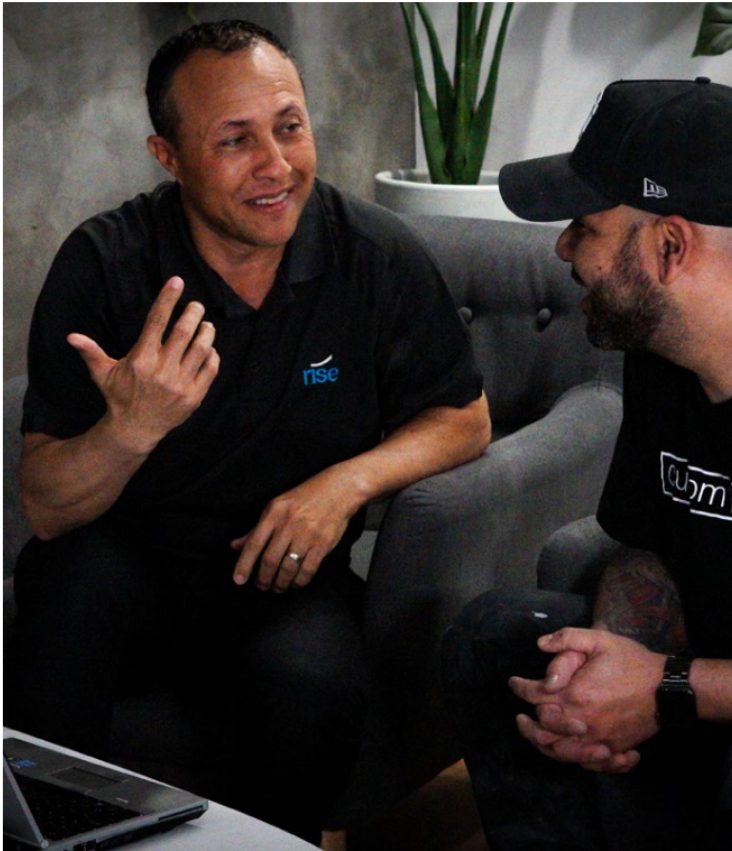In the dynamic and ever-changing business landscape, the timing of recruitment plays a critical role. As the festive season rolls in, it’s common for many companies to scale down their operations and postpone key activities like recruitment until the New Year. However, this season, filled with a sense of celebration and contemplation, offers an unparalleled opportunity for proactive businesses. Contrary to the usual practice, Christmas is an excellent time to engage in recruitment, presenting a prime moment to attract the best talent available.
The benefits of recruiting during the holiday season are diverse. With many businesses putting their hiring activities on hold, there’s a noticeable decrease in competition in the job market. This reduction offers your job adverts a unique opportunity to stand out more prominently, free from the usual noise of competing listings. It’s the perfect chance to capture the attention of potential candidates who might have the time and mindset to consider significant career changes during this period.
Additionally, the festive season often prompts individuals to reflect on their personal and professional lives. This introspection can lead to a more active job search as candidates seek new beginnings and opportunities that align with their aspirations for the upcoming year. Advertising job roles during this season can tap into a pool of candidates who are not only motivated but also ready for a transformative career move.
The holiday season also offers a unique opportunity to reflect your company’s culture and values in your job advertisements. Creating ads with a hint of festive warmth and positivity can appeal to candidates looking for workplaces prioritising employee well-being and happiness.
In this article, we explore nine key strategies to optimise recruitment during the holiday season. These range from capitalising on reduced competition to integrating the spirit of the season into your recruitment efforts. Each strategy is crafted to guide you through the distinctive aspects of holiday hiring. Regardless of the size of your business, these insights aim to bolster your recruitment approach and leverage the potential of this festive period.
As we delve into these strategies, it’s essential to view the holiday season not just as a time for celebration but also as an opportunity for growth and revitalisation within your business. Let’s explore these strategies and learn how to turn this festive season into a period of successful recruitment and new beginnings for your company.
1. Craft Compelling Job Descriptions
A well-crafted job description is the cornerstone of effective recruitment. It serves as the first point of contact between your organisation and potential candidates, setting the tone for their perception of your company. To craft a compelling job description, clearly outline the role’s responsibilities and qualifications. Be specific about what the job entails and the skills required to excel in the position. This clarity helps to attract candidates who are not only qualified but also genuinely interested in the role.
Beyond the basic requirements, your job description should highlight the unique opportunities for growth and development within the role. Explain how this position contributes to the organisation’s broader objectives and how it fits into the team and company culture. This insight helps candidates understand the impact they could have and the value they can bring.
Furthermore, infuse your job description with elements that reflect your organisation’s ethos and work environment. Use a tone that aligns with your company’s culture, whether it’s formal, collaborative, innovative, or entrepreneurial. This tone helps candidates gauge if they would be a good fit for your team.
Additionally, include details about the team that the candidate will be joining. Describe the team’s dynamics, the types of projects they work on, and the collaborative environment they foster. This paints a picture of the day-to-day experiences and the team’s working style, which can be a significant draw for potential candidates.
2. Build a Strong Employer Brand
Your employer brand is essentially your company’s identity as a place of work. It encompasses your organisation’s values, culture, and the overall employee experience you offer. A strong employer brand is crucial in attracting top talent and setting your organisation apart in a competitive job market.
Start by clearly defining and communicating your company’s values. What does your organisation stand for? What are its core principles? These values should resonate through every aspect of your business operations, from your product or service offerings to the way you treat your employees.
Showcase your company culture through various platforms. Utilise your website, social media channels, and marketing materials to give potential candidates a glimpse into life at your company. Share stories and testimonials from current employees that highlight the supportive and dynamic work environment you provide. This could include showcasing team events, community involvement, or employee achievements.
Promote the benefits and perks of working at your company. Whether it’s competitive salaries, health benefits, professional development opportunities, or unique office amenities, make sure these are prominently featured in your recruitment materials. These benefits are often a deciding factor for candidates considering a job offer.
Engage in initiatives that reinforce your brand as an employer of choice. Participate in industry events, sponsor community projects, or create content that positions your company as a thought leader in your field. These activities not only enhance your visibility but also build a positive reputation as an employer.
In essence, building a strong employer brand involves a consistent and strategic approach to showcasing your company’s values, culture, and the benefits of joining your team. By doing so, you attract candidates who are not just looking for a job, but seeking a meaningful career in an organisation that aligns with their own values and aspirations.
3. Leverage Online Platforms
In today’s digital age, leveraging online platforms is a pivotal strategy in attracting top talent. The vast reach and versatility of these platforms make them indispensable tools in your recruitment arsenal. To maximise their potential, it’s crucial to adopt a tailored approach for each platform.
Job boards remain a staple in recruitment, providing access to a vast pool of candidates actively seeking new opportunities. Platforms like Indeed, Glassdoor, and LinkedIn cater to a broad audience, while niche job boards target specific industries or professions. The key is to craft clear, engaging job listings that stand out. Use SEO-friendly job titles and descriptions to ensure your postings are easily discoverable by suitable candidates.
Professional networking sites, particularly LinkedIn, are invaluable for reaching a more passive audience who may not be actively seeking new roles but are open to exciting opportunities. LinkedIn allows for more direct and personalised engagement with potential candidates. Use it to showcase your company culture, share updates about your organisation, and headhunt by directly approaching candidates who fit your desired profile.
Social media platforms like Facebook, Instagram, and Twitter offer unique ways to connect with potential candidates. These platforms are ideal for showcasing your company’s culture and employer brand through engaging content, stories, testimonials, and behind-the-scenes glimpses into your workplace. Paid advertising on these platforms can also be highly effective, allowing you to target specific demographics and interests.
4. Employee Referrals
Employee referrals are a powerful tool in the recruitment process, often leading to faster, more cost-effective, and more successful hires. Encouraging your current employees to refer qualified candidates can significantly expand your talent pool with individuals who are likely to be a good fit for your company culture.
To establish a successful employee referral program, first communicate clearly with your staff about the types of candidates you’re seeking. Provide them with job descriptions and ideal candidate profiles to help them understand who would be a good fit.
Incentivising your team is key to motivating them to participate in the referral program. Incentives could include financial bonuses, extra vacation days, or other rewards. Make sure the rewards are enticing enough to encourage active participation but balanced to ensure that quality is prioritised over quantity.
It’s also important to make the referral process easy and straightforward. Provide a simple way for employees to submit referrals and keep them updated on the status of their referrals. This transparency can help maintain enthusiasm and trust in the program.
Finally, celebrate successful referrals. Acknowledging and appreciating employees who contribute to growing your team can foster a positive and collaborative workplace culture. It shows your team that their input and connections are valued, strengthening their engagement and loyalty to your company.
In leveraging online platforms and employee referrals, the goal is to create a multifaceted approach that harnesses the power of digital reach and the personal networks of your existing team. Together, these strategies can significantly enhance your recruitment efforts, attracting a diverse range of talented candidates.
5. Engaging Career Website
An engaging career website acts as the digital front door to your organisation for potential candidates, offering a crucial opportunity to make a lasting first impression. It’s not just about listing job openings; it’s about presenting a compelling narrative of your company’s culture, values, and vision.
Start by ensuring that your careers page is user-friendly and easy to navigate. Potential candidates should find it simple to search and apply for positions. Incorporate multimedia elements like videos, images, and employee testimonials to bring to life what it’s like to work at your company. These elements can be powerful in conveying your organisational culture and the everyday experiences of your team members.
Highlighting your company’s achievements, awards, and milestones can also build credibility and prestige. Share stories of growth, innovation, and success to paint a picture of a dynamic and thriving workplace.
Dedicate sections to diversity, equity, and inclusion, showcasing your commitment to creating a welcoming and supportive environment for all employees. This can be particularly appealing to candidates seeking a workplace that values and promotes diversity.
Your careers page should also reflect the uniqueness of your company. Whether it’s unique office perks, community involvement, or a strong focus on employee wellness, these aspects can set your organisation apart in the eyes of prospective candidates.
6. Participate in Industry Events
Participation in industry events, such as job fairs, career expos, and conferences, offers a direct and personal way to connect with potential candidates. These events provide a platform to showcase your organisation and engage with talent face-to-face, allowing for more nuanced and meaningful interactions than digital communications alone.
At these events, ensure your booth or presentation stands out. Engaging visuals, interactive elements, and live demonstrations can draw more visitors to your space. Have knowledgeable and enthusiastic team members present who can speak authentically about their experiences and the benefits of working for your company.
Utilise these events to network, not just with potential candidates, but also with other industry professionals. This can lead to partnerships or collaborations that could be beneficial in future recruitment efforts.
Additionally, participating in panel discussions or hosting workshops can position your company as a thought leader in your industry. This not only enhances your employer brand but also attracts candidates who are looking for employers that are at the forefront of industry developments and trends.
In summary, an engaging career website and active participation in industry events are both critical in creating a dynamic and multifaceted recruitment strategy. They provide platforms to effectively communicate your company’s story, culture, and values, and to connect with potential candidates in a more personal and impactful way.
7. Internship and Co-op Programs
Implementing internship and co-operative (co-op) programs can be a strategic move for businesses looking to attract and nurture new talent. These programs offer a mutually beneficial opportunity: companies gain fresh perspectives and potential future employees, while students or recent graduates get valuable, real-world experience.
To develop a successful internship or co-op program, partner with educational institutions. This collaboration can ensure a steady flow of candidates and align the program with current academic standards and industry needs. Design these programs to be meaningful and educational, providing interns and co-op students with real responsibilities and learning opportunities. This approach ensures that participants gain skills and experiences that are genuinely beneficial to their careers.
It’s also important to create an environment where interns and co-op students feel like integral parts of the team. Regular feedback, mentorship, and inclusion in team meetings and projects can enhance their experience and engagement. Remember, today’s interns could be tomorrow’s full-time employees, so treating them as valuable team members can foster long-term loyalty and interest in your company.
Lastly, use these programs as a talent pipeline. Evaluate the performance of participants and consider them for future employment opportunities within your organisation. This strategy can help fill your talent pool with individuals already familiar with your company culture and operations, reducing onboarding time and costs.
8. Competitive Compensation and Benefits
In the competitive landscape of talent acquisition, offering competitive compensation and benefits is essential. Your compensation package plays a crucial role in attracting and retaining top talent. It reflects how much you value your employees and can significantly impact your employer brand.
Stay informed about the industry standards for salaries and benefits. Regularly review and adjust your compensation packages to ensure they are competitive and fair. Consider conducting salary surveys or consulting industry reports to gather insights.
In addition to monetary compensation, focus on a comprehensive benefits package. This could include health insurance, retirement plans, paid time off, and wellness programs. Benefits that promote work-life balance, such as flexible working hours or remote work options, are increasingly important to many professionals.
Furthermore, consider unique perks that align with your company culture and values. These could be anything from professional development opportunities, such as training and mentorship programs, to more lifestyle-oriented perks like gym memberships or company retreats.
Transparent communication about compensation and benefits during the recruitment process is also vital. Clearly outlining what your company offers can help set realistic expectations and demonstrates your commitment to taking care of your team members.
Overall, a competitive and well-structured compensation and benefits package not only helps attract top talent but also contributes to employee satisfaction and retention, fostering a productive and positive workplace environment.
9. Professional Development Opportunities
In today’s fast-paced work environment, professional development opportunities are not just additional benefits; they are crucial components of an attractive employment package. Employees are increasingly looking for roles that not only utilise their skills but also offer avenues for growth and advancement. Focusing on professional development in your recruitment strategy can significantly enhance your appeal to ambitious candidates.
To implement this, consider offering a range of development programs tailored to different career stages. For new hires, induction programs that familiarise them with your business processes and culture can set a strong foundation. For existing employees, consider offering ongoing training sessions, workshops, or courses that help them keep up with industry trends and develop new skills.
Mentorship programs are another effective tool for professional development. Pairing less experienced employees with seasoned professionals can facilitate knowledge transfer, build a supportive work culture, and aid in career progression. This not only benefits the mentees but also provides leadership development opportunities for mentors.
Also, highlight any opportunities for career advancement within your organisation. Show potential and current employees clear career paths and the support available to help them reach their professional goals. This could include leadership training programs, opportunities to lead projects, or pathways to move into different roles or departments.
10. Flexible Work Arrangements
Flexible work arrangements have become a key factor in job satisfaction and work-life balance. The ability to offer flexible working hours, remote work options, or hybrid models can make your company stand out to potential candidates who value flexibility and autonomy.
In your recruitment materials, clearly communicate the flexible working options available. Whether it’s the ability to work from home, flexible start and finish times, or compressed workweeks, these options should be prominently featured to attract candidates looking for a modern and adaptable workplace.
Remote work options can also widen your talent pool, allowing you to attract candidates from different regions or even countries. This can bring diverse perspectives into your team and enhance your company’s creativity and problem-solving abilities.
However, it’s important to also focus on how you support remote or flexible working. This includes providing the necessary technology, maintaining regular communication, and fostering a sense of team unity despite physical distances.
In conclusion, emphasising professional development opportunities and flexible work arrangements in your recruitment strategy can significantly increase your appeal to potential candidates. These elements show a commitment to employee growth and well-being, making your organisation an attractive place to work and grow professionally.










